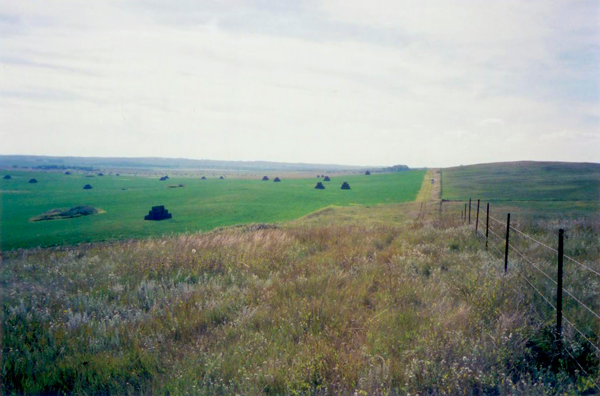A gravel road, industrial park, vacant subdivision, etc.
For a dog owner who lives in the country, the possibilities for training sites are endless. There are the short and long grasses located on Conservation Reserve Program land. Or the cattail sloughs. Or the small creeks. Or the fence lines. And many more areas too numerous to name. It’s enough to make city folks drool—just like their dogs. Because of time restraints, it can be a grueling task to drive to the local retriever club outside of town or to some other destination miles away—just to spend some time working with a dog. It can be a downright hassle.
But urban dwellers shouldn’t despair. By just making a few calls or driving around a bit, plenty of sites— right in town—can be found to train a dog. For example, many towns have public land, industrial parks or vacant subdivisions that could provide an adequate spot for training. But if you do go on private land, make sure you get permission.
Actually, we have areas right in our back yard where we can do 75 percent of our training—whether it be a mowed area, a park, a schoolyard, or football field.
Why are these areas ideal?
The main reason is that a lot of dog training work, starting with the basic commands—sit, stay, heel, and come— can be done on a “bare-ground” area. Once a dog has those preliminaries down, then the bare ground area can be used for retrieval training. The first retrieves should be short.
Once the dog has the short retrieves down, longer ones, with the assistance of a friend stationed 50 yards to 100 yards away, can be attempted. An open-field retrieve like that is so important because a dog builds its confidence; there is no chance for failure.
Then comes cover
Once the dog can handle the 100-yard open retrieve, then a trainer can go to one with cover. Double or multiple retrieves should be handled the same way—first on open ground, then with obstacles. A baseball diamond fence, for example, can be used as a barrier so a trainer can split a multiple retrieve, setting the dog up for getting the dummies or birds one at a time.
One thing dog trainers should avoid is taking their dogs to the same spot all the time. Trainers should identify three or four sites and rotate them. That way a dog won’t become familiar with the area and get distracted. When you put a dog in a new area, its confidence level is not the same. The dog is more focused to you on “clean grounds”. The same logic can be carried through to training sessions.
It’s important as a trainer to have objectives from one night to the next. One night, a trainer can work on sit, stay, heel, come and the next night on a marked retrieve and so on.
Our main objective should be to advance the hunting ability of the dog prior to the season. I see so many people get into an exercise training rut that they forget about teaching the dog new things or making field performance improvements.
Good training tools
Here are a few things that owners need for training their dogs:
- Six canvas dummies
- Starter’s pistol, with blanks
- A half-dozen plastic knobby dummies
- A leash
- A retriever launcher, if working alone
- A whistle
